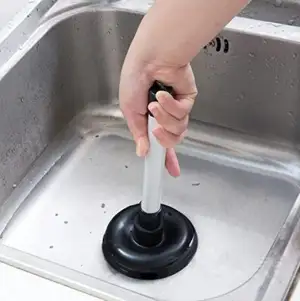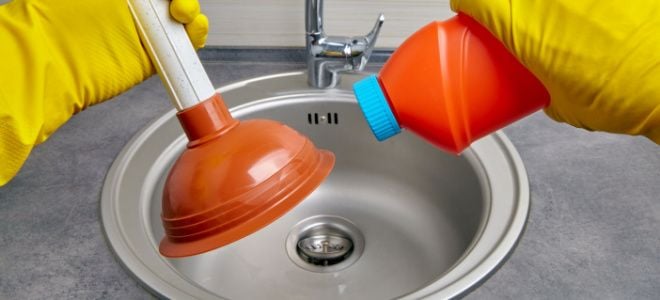Tips to Properly Apply Plunger and Drain Cleaner: Professional Guidance
Tips to Properly Apply Plunger and Drain Cleaner: Professional Guidance
Blog Article
Right here further down you can locate a good deal of good insights about Tips on How to Effectively Use a Plunger.

Intro
Proper upkeep of home drains is essential for preventing blockages and making sure smooth water flow. One of the secret tools in every homeowner's toolkit is the plunger, alongside different drainpipe cleansers created to take on persistent blockages effectively. This post discovers just how to make use of bettors and drainpipe cleaners effectively to maintain your drains pipes moving openly.
Section 1: Understanding Plungers
Kinds of Plungers
There are several kinds of plungers available, each created for various sorts of drains pipes and obstructs. The most typical kinds consist of cup plungers, flange plungers, and accordion plungers.
Exactly How Plungers Work
Bettors service the principle of producing pressure and suction to remove clogs. When appropriately used over a drainpipe, they produce a vacuum that can pull out debris or separate obstructions.
Selecting the Right Plunger
Choosing the best plunger relies on the kind of drain and the nature of the obstruction. Cup plungers are perfect for sinks and bathtubs, while flange bettors are better fit for toilets as a result of their style.
Common Blunders with Bettors
Preventing these mistakes makes certain efficient plunging: inappropriate seal around the drainpipe, not enough pressure, and unclear surrounding particles.
Area 2: Using Plungers Successfully
Prep work
Before plunging, guarantee the bettor covers the drain totally and creates a tight seal. Clear any type of visible debris around the drainpipe opening.
Method
Beginning with mild diving motions to build suction. Increase stress slowly, utilizing a constant rhythm. Repeat as necessary up until the drainpipe clears.
Repairing Tips
If diving does not function, attempt adjusting the seal, applying petroleum jelly for a better seal, or making use of a different type of bettor.
Area 3: Comprehending Drainpipe Cleaners
Kinds Of Drain Cleaners
Drain cleaners can be chemical or chemical. Chemical cleaners utilize solid chemicals to liquify blockages, while enzymatic cleansers utilize natural enzymes to break down raw material.
Exactly How Drainpipe Cleansers Work
Chemical cleansers respond with blockages to liquify them, while chemical cleansers break down natural products like hair and grease without harming pipes.
Safety and security Considerations
Constantly use gloves and eye security when making use of chemical drainpipe cleaners. Make certain sufficient air flow and comply with maker instructions meticulously.
Eco-Friendly Alternatives
Consider utilizing vinegar and baking soda or enzyme-based cleansers for green options that are safer for pipes and the atmosphere.
Section 4: Utilizing Drainpipe Cleansers Efficiently
Application Methods
Pour chemical cleaners straight right into the drain opening. Allow them to work for the suggested time before purging with warm water. Enzymatic cleaners ought to rest overnight.
Safety measures
Avoid blending various kinds of cleaners, as this can produce toxic fumes. Never ever make use of chemical cleansers along with a plunger, as spilling can occur.
Taking Care Of Persistent Obstructions
For relentless obstructions, think about using a plumbing serpent or calling an expert plumber to avoid damage to pipelines.
Final thought
To conclude, understanding exactly how to use plungers and drainpipe cleaners properly is essential for preserving healthy and balanced plumbing systems. By selecting the right tools and techniques, homeowners can tackle small blockages and avoid significant plumbing concerns down the line.
How To Properly Use A Plumbing Snake To Clear Drains
When any drain clogs in our home arise, we tend to gravitate toward the plunger and little else. In cases where the plunger and its vacuum-created pressure are not able to clear clogs, many immediately move to harmful chemicals or simply call their plumber to fix the issue.
we’re happy to help with all drain cleaning needs and concerns. This includes informing you on a few other home remedies you may have at your disposal for minor to moderate clogs, one of which is the use of a plumbing snake. Many people have never used one of these before – let’s go over the steps to take when your drain clogs and you have a plumbing snake available.
Attempt Plunger Use
The first step here, as we noted above, should indeed be to grab your plunger when you notice a drain clog and attempt to resolve it this way. If you’re unsure how to use a particular type of plunger, our plumbers can answer any questions you have. If this doesn’t do the trick, however, you move on to the snake.
Locate And Prepare Snake
A plumbing snake is a metal or plastic device that’s generally about a quarter of an inch thick. It’s design with significant extensions, meant to reach down into your clogged drain and push the clog out. Snakes also contain drain augers that will latch onto and push stubborn blockages.
If your plunger doesn’t clear a clog, locate your snake and bring it to the drain in question. We also recommend keeping a bucket nearby to collect the clog once you pull it out, plus we’d advise wearing goggles and possibly protective gloves.
Feed Snake
Once you’re ready to go, feed the snake slowly down the drain, using the crank device it comes with to keep it moving until it finds the clog. Once this happens, much of the clog will be latched onto the coil so you can pull it out, while the rest will simply break up and flow downward.
Detach Debris
Remove the snake slowly from the drain, and once you’ve done so, pick off any debris that’s stuck to the coil. This is another area where wearing gloves is a must.
Flush Drain
Finally, take a few minutes to ensure the snake has done its job correctly. If you’ve been using it on a toilet, flush the toilet a couple times and make sure everything flows well. If you’ve used it on a different drain, flush it with some room temperature water.
https://www.mybuddytheplumber.com/blog/how-to-properly-use-a-plumbing-snake-to-clear-drains/

Application Methods
Pour chemical cleaners straight right into the drain opening. Allow them to work for the suggested time before purging with warm water. Enzymatic cleaners ought to rest overnight.
Safety measures
Avoid blending various kinds of cleaners, as this can produce toxic fumes. Never ever make use of chemical cleansers along with a plunger, as spilling can occur.
Taking Care Of Persistent Obstructions
For relentless obstructions, think about using a plumbing serpent or calling an expert plumber to avoid damage to pipelines.
Final thought
To conclude, understanding exactly how to use plungers and drainpipe cleaners properly is essential for preserving healthy and balanced plumbing systems. By selecting the right tools and techniques, homeowners can tackle small blockages and avoid significant plumbing concerns down the line.
How To Properly Use A Plumbing Snake To Clear Drains
When any drain clogs in our home arise, we tend to gravitate toward the plunger and little else. In cases where the plunger and its vacuum-created pressure are not able to clear clogs, many immediately move to harmful chemicals or simply call their plumber to fix the issue.
we’re happy to help with all drain cleaning needs and concerns. This includes informing you on a few other home remedies you may have at your disposal for minor to moderate clogs, one of which is the use of a plumbing snake. Many people have never used one of these before – let’s go over the steps to take when your drain clogs and you have a plumbing snake available.
Attempt Plunger Use
The first step here, as we noted above, should indeed be to grab your plunger when you notice a drain clog and attempt to resolve it this way. If you’re unsure how to use a particular type of plunger, our plumbers can answer any questions you have. If this doesn’t do the trick, however, you move on to the snake.
Locate And Prepare Snake
A plumbing snake is a metal or plastic device that’s generally about a quarter of an inch thick. It’s design with significant extensions, meant to reach down into your clogged drain and push the clog out. Snakes also contain drain augers that will latch onto and push stubborn blockages.
If your plunger doesn’t clear a clog, locate your snake and bring it to the drain in question. We also recommend keeping a bucket nearby to collect the clog once you pull it out, plus we’d advise wearing goggles and possibly protective gloves.
Feed Snake
Once you’re ready to go, feed the snake slowly down the drain, using the crank device it comes with to keep it moving until it finds the clog. Once this happens, much of the clog will be latched onto the coil so you can pull it out, while the rest will simply break up and flow downward.
Detach Debris
Remove the snake slowly from the drain, and once you’ve done so, pick off any debris that’s stuck to the coil. This is another area where wearing gloves is a must.
Flush Drain
Finally, take a few minutes to ensure the snake has done its job correctly. If you’ve been using it on a toilet, flush the toilet a couple times and make sure everything flows well. If you’ve used it on a different drain, flush it with some room temperature water.
https://www.mybuddytheplumber.com/blog/how-to-properly-use-a-plumbing-snake-to-clear-drains/

I came across that blog post on while doing a lookup on the web. Please set aside a second to share this write-up if you liked it. I enjoy reading our article about A Guide to Plungers (and How to Use Them).
Schedule Today Report this page